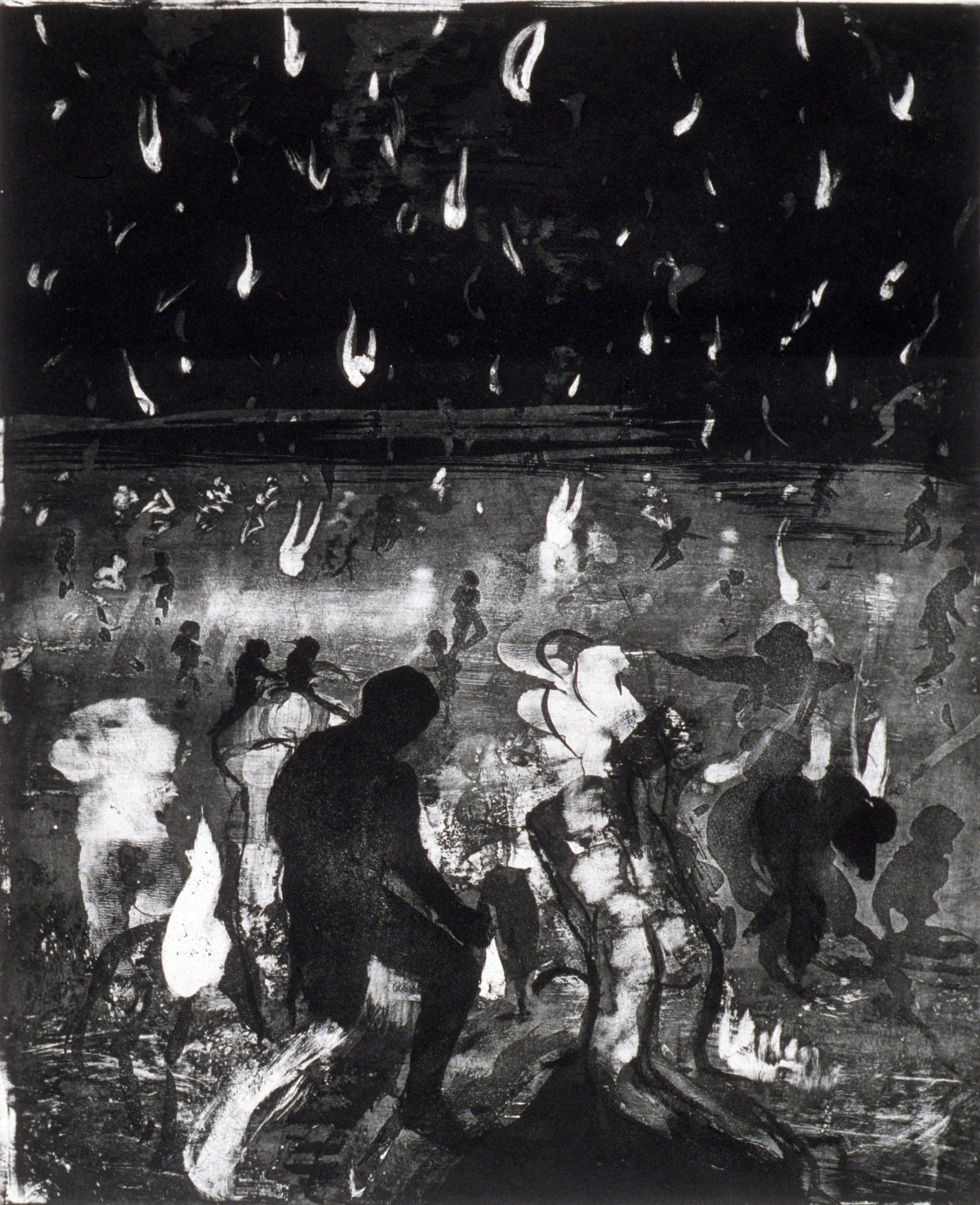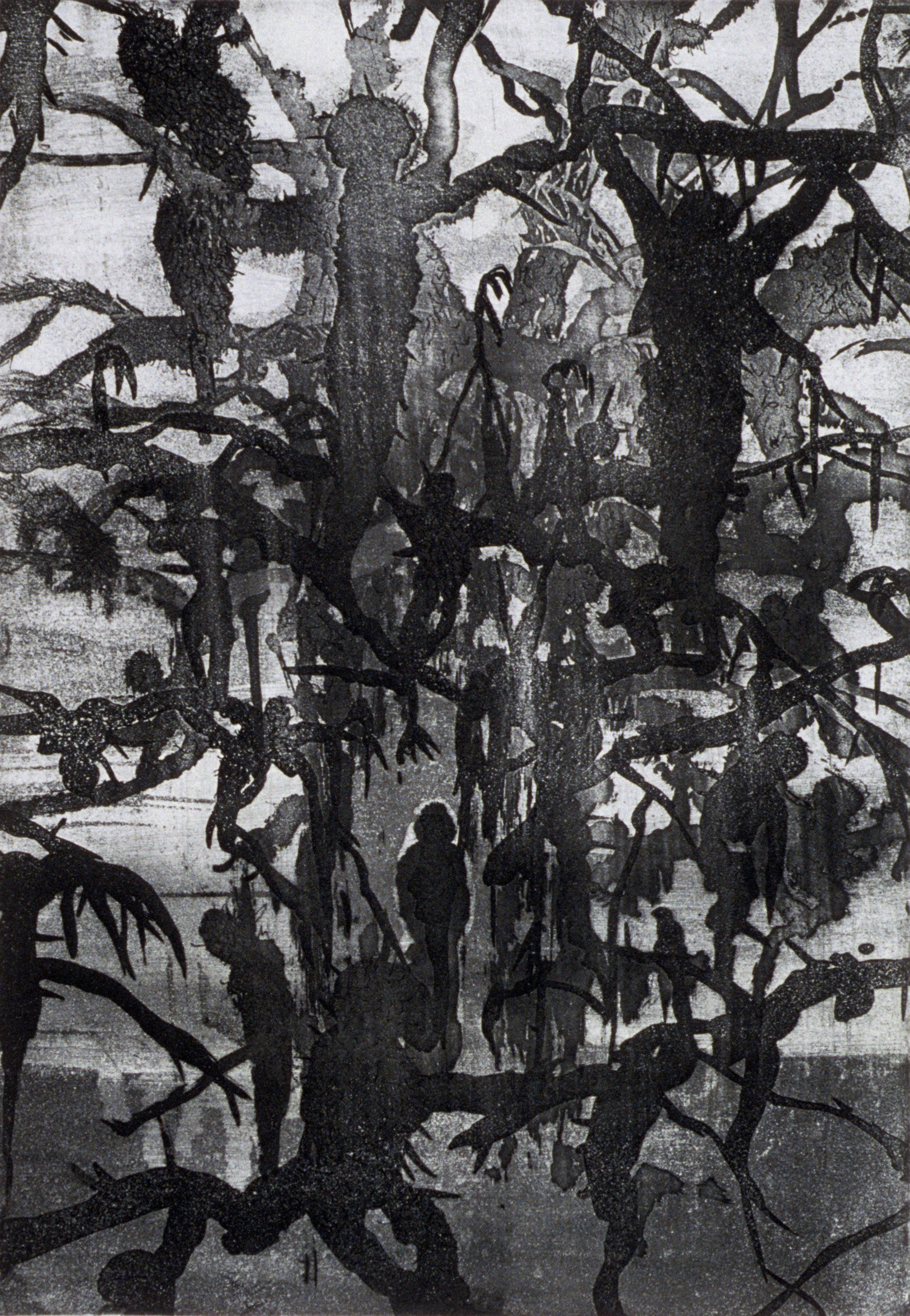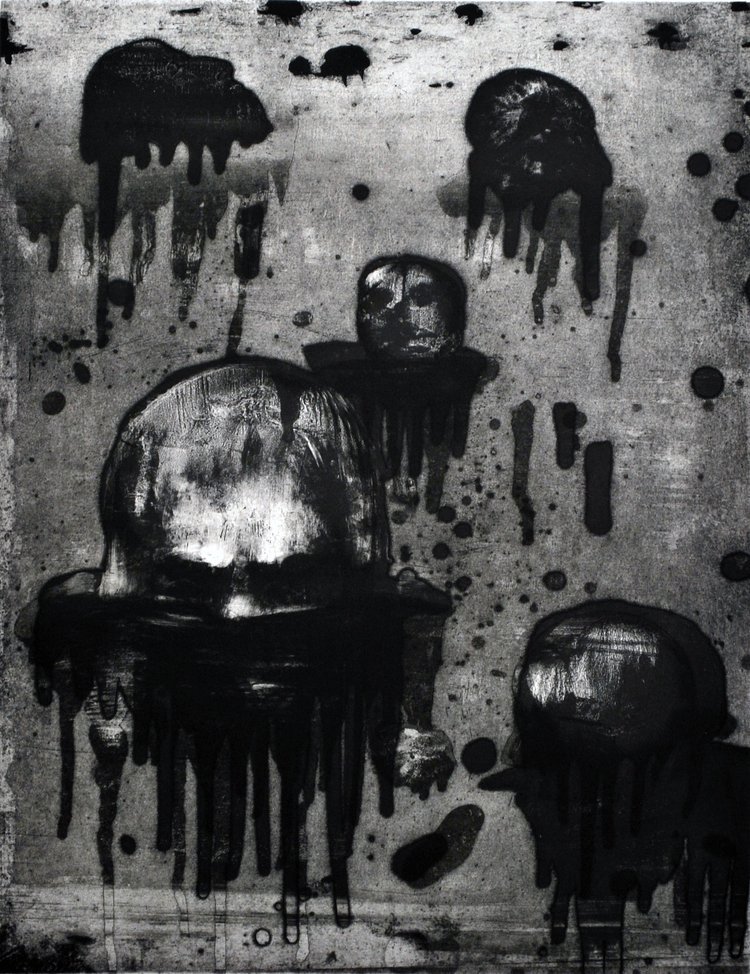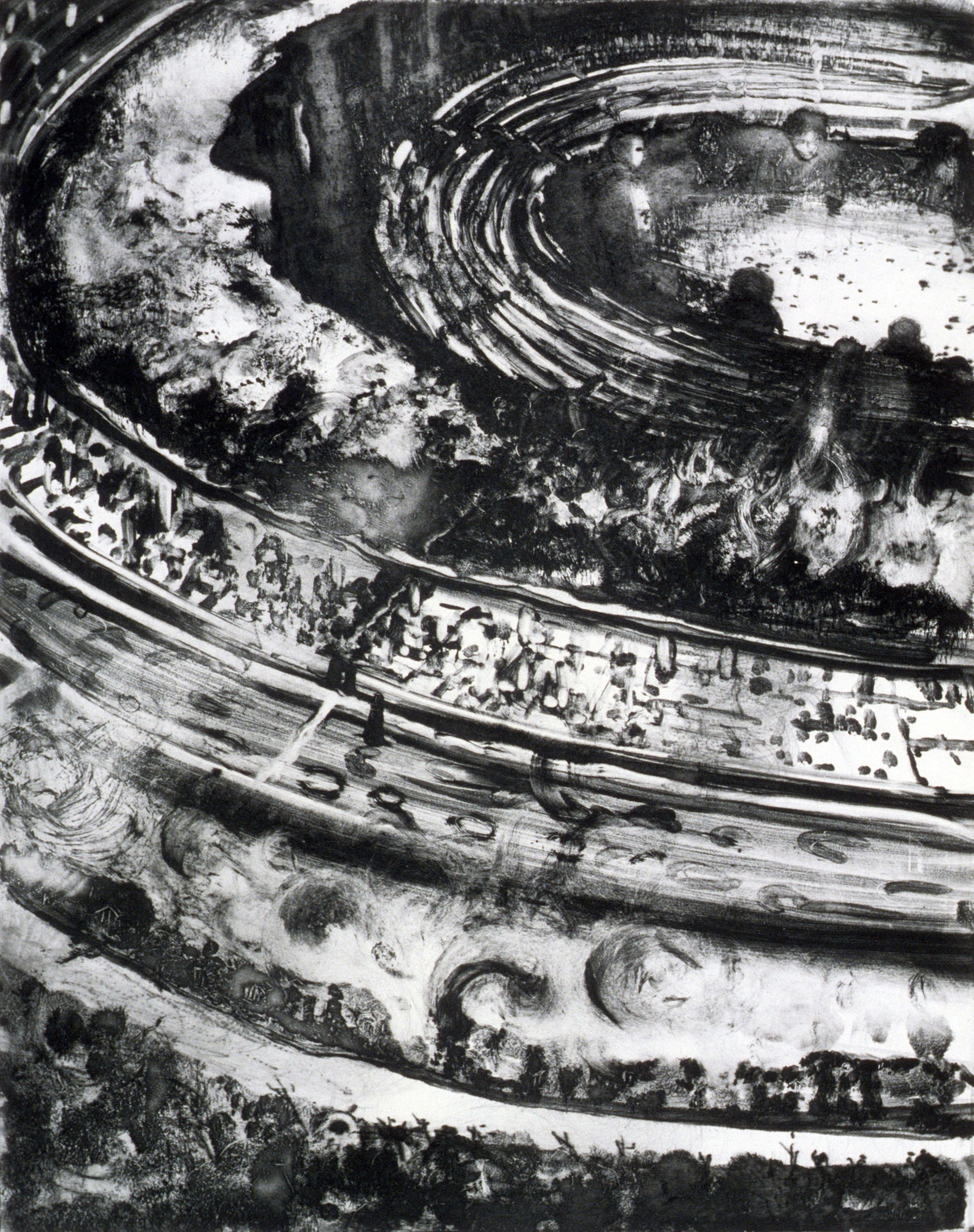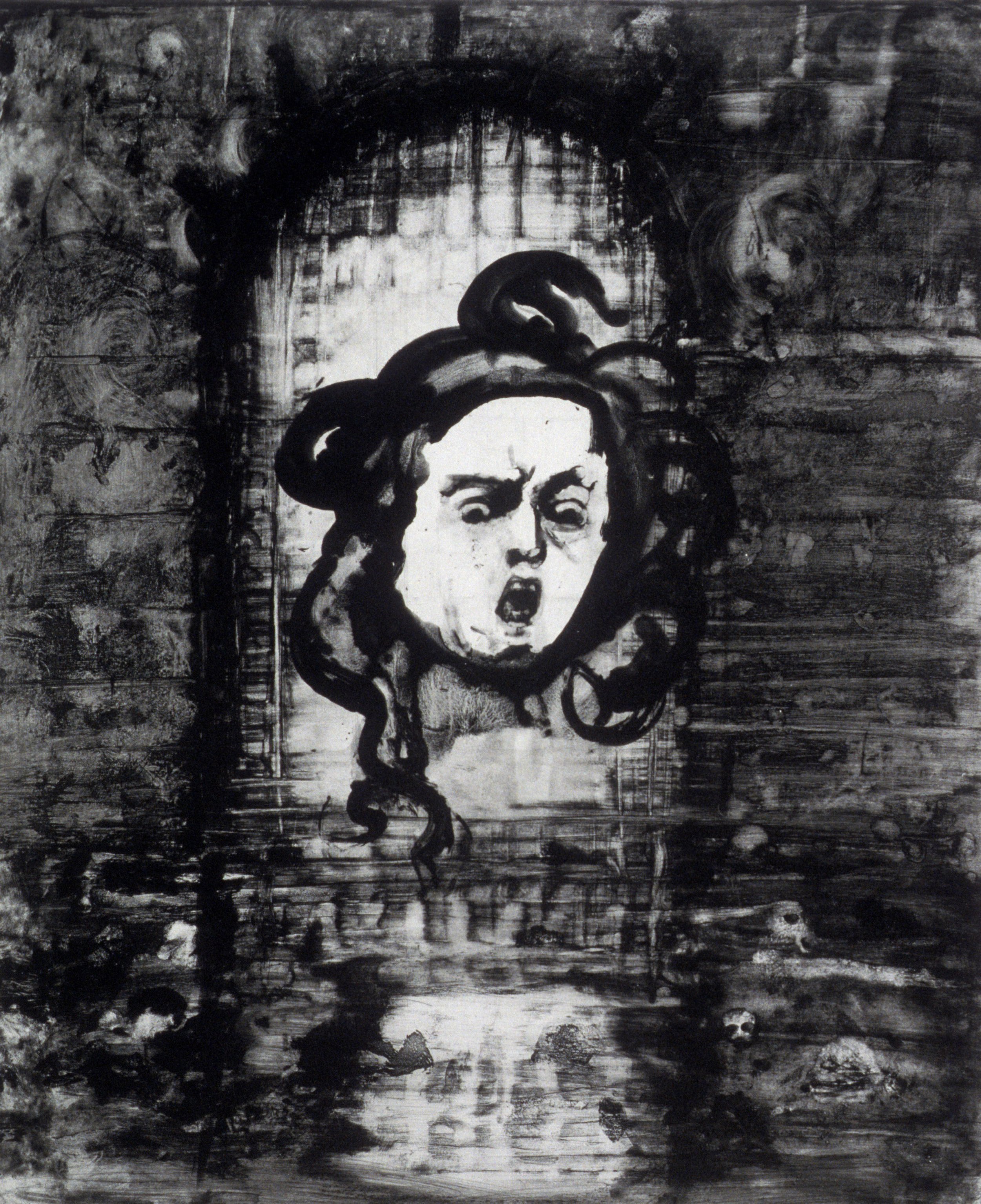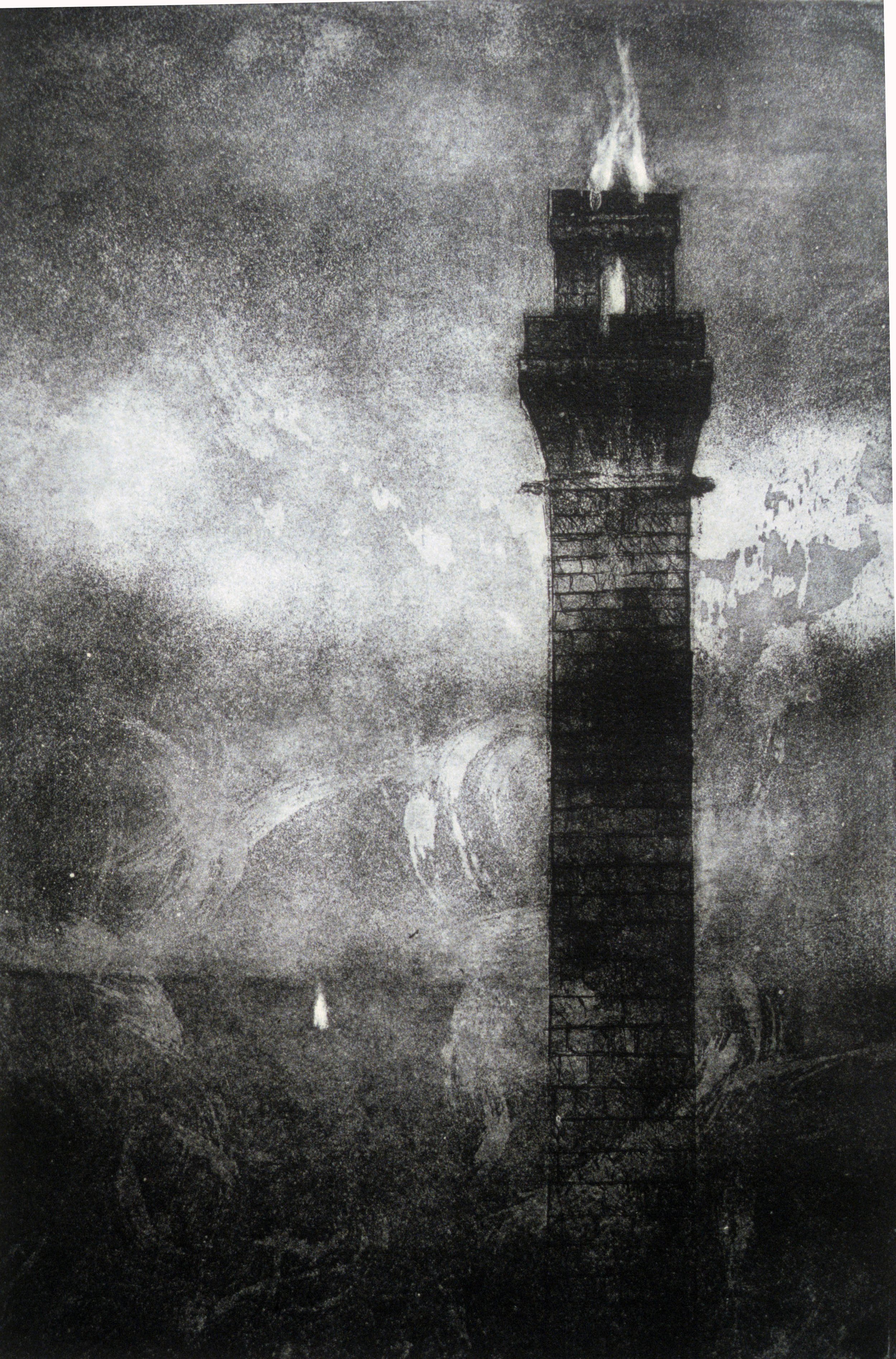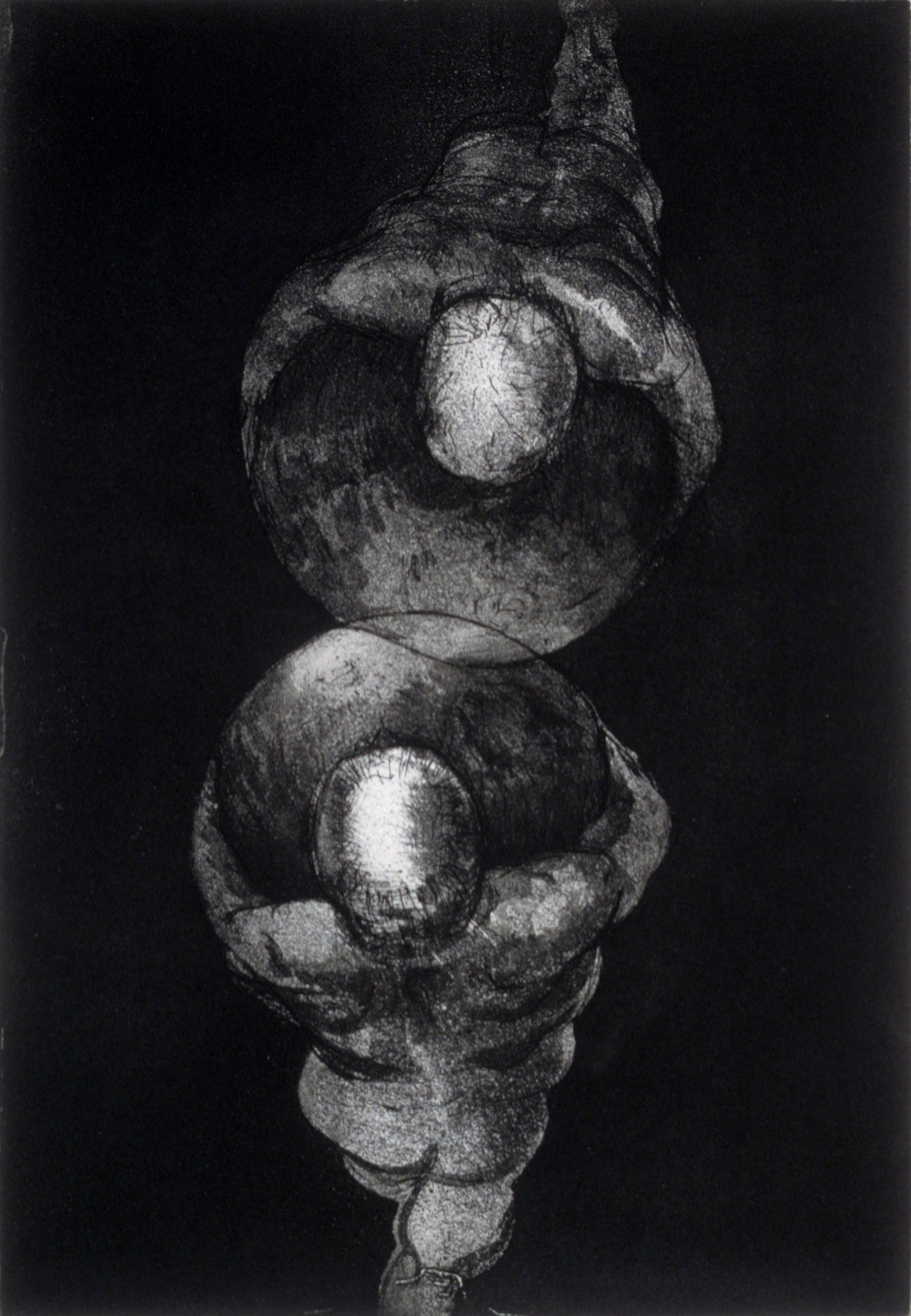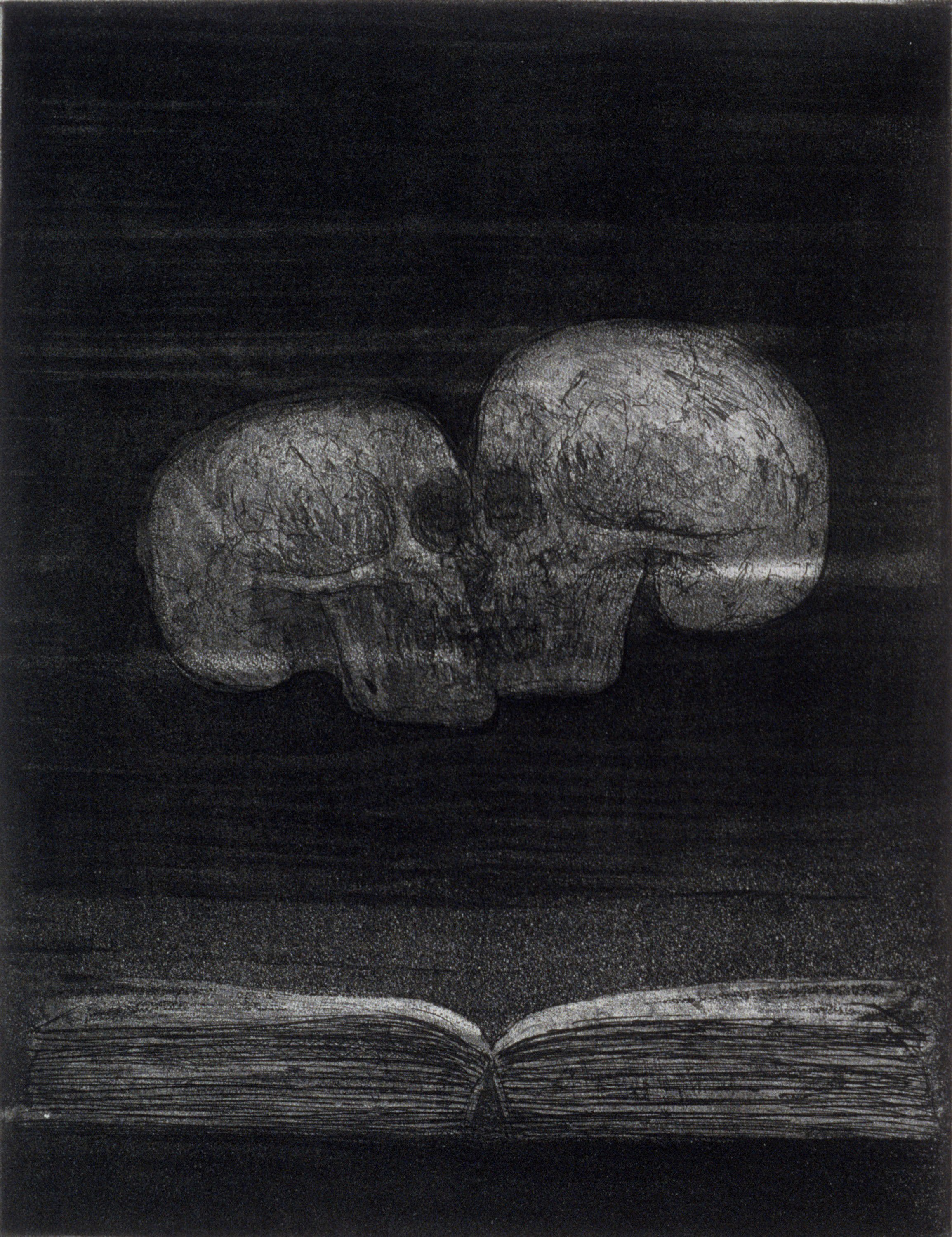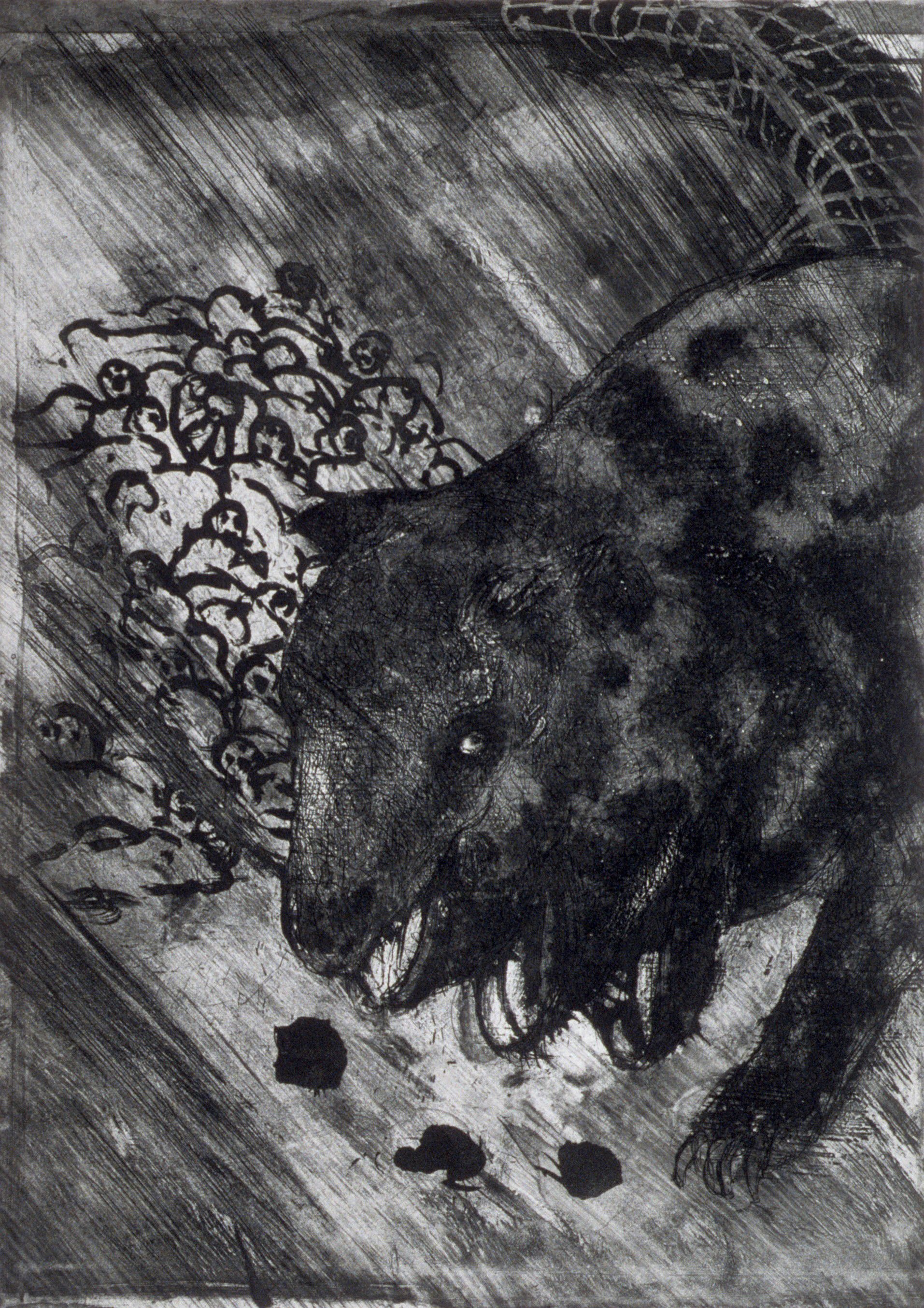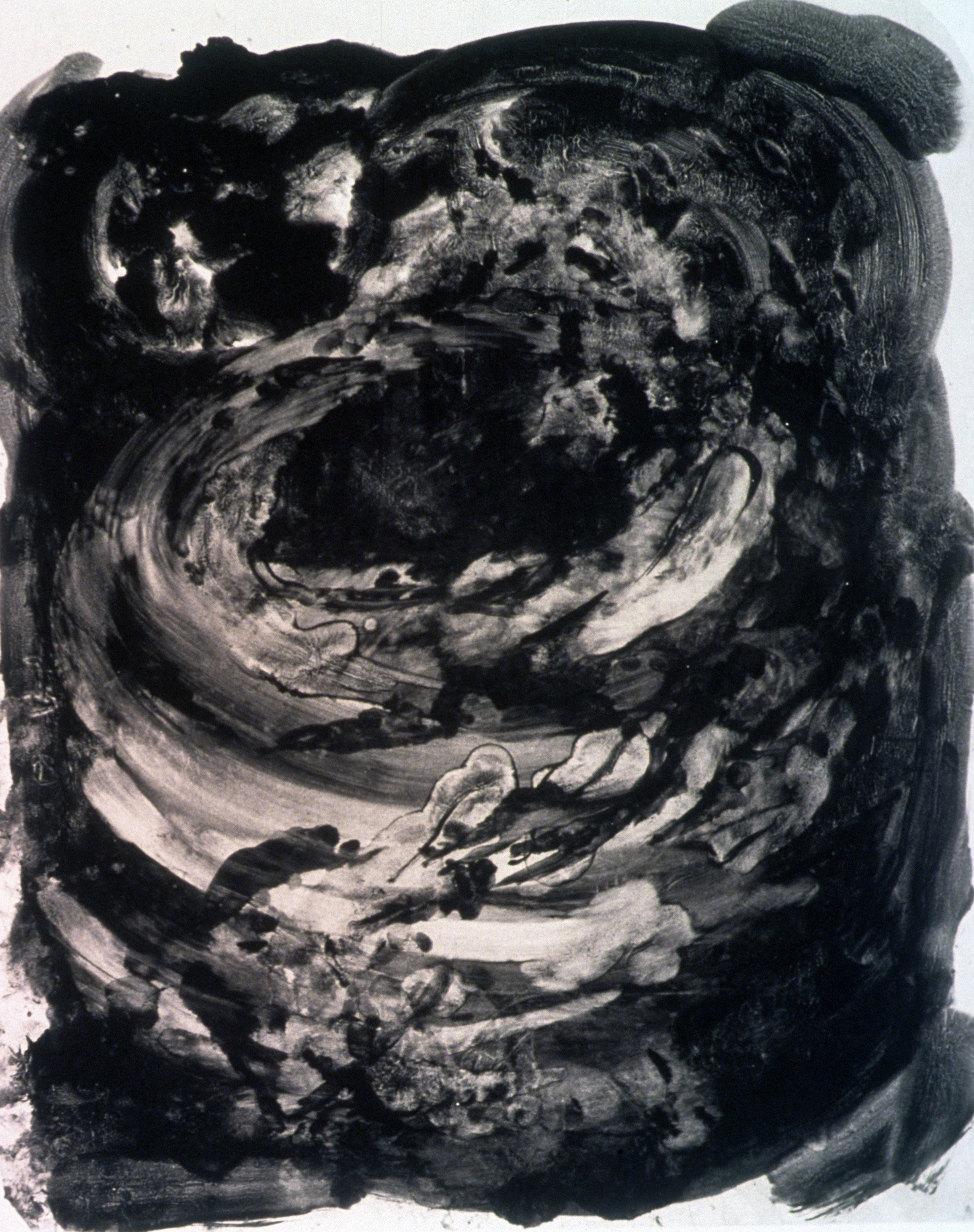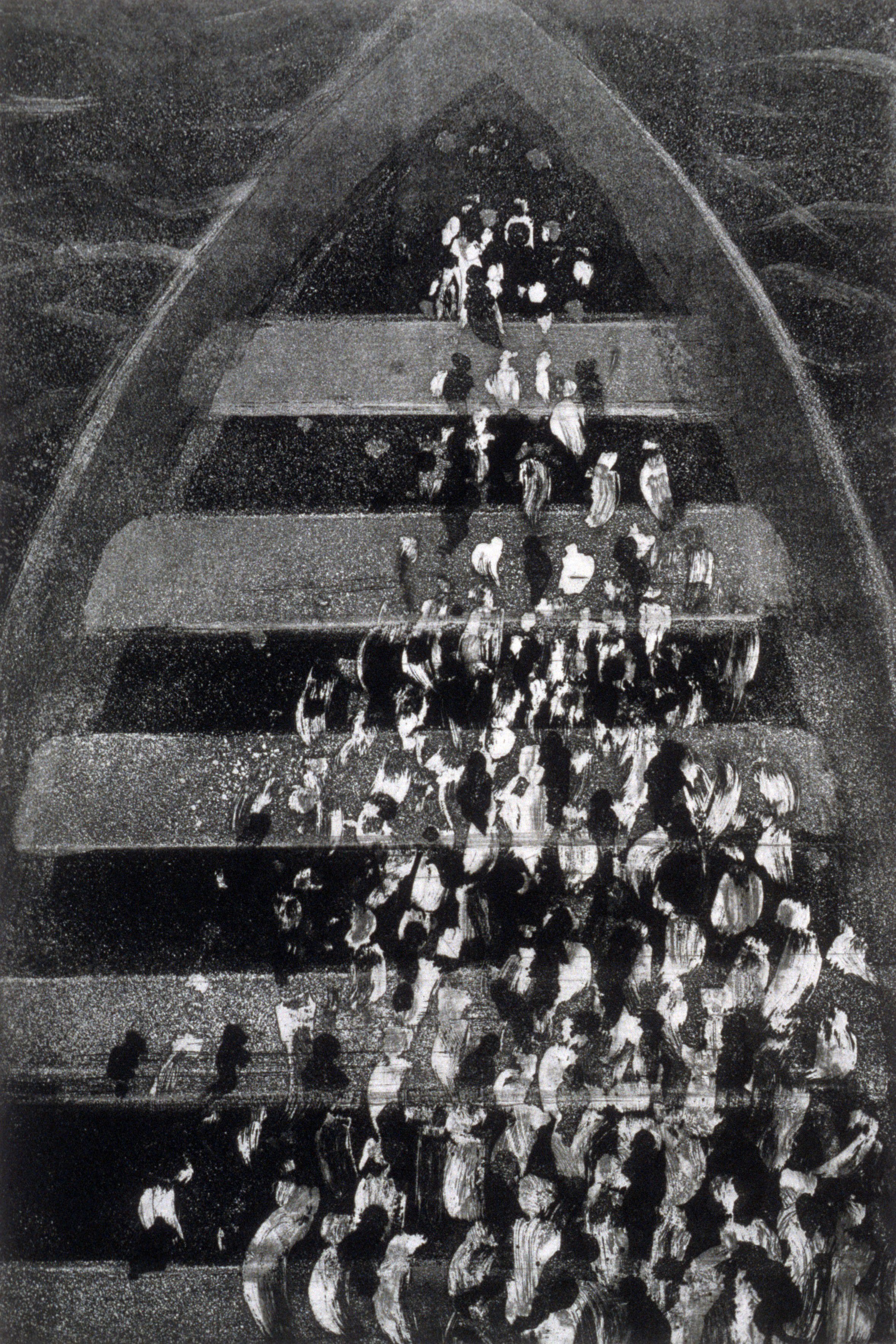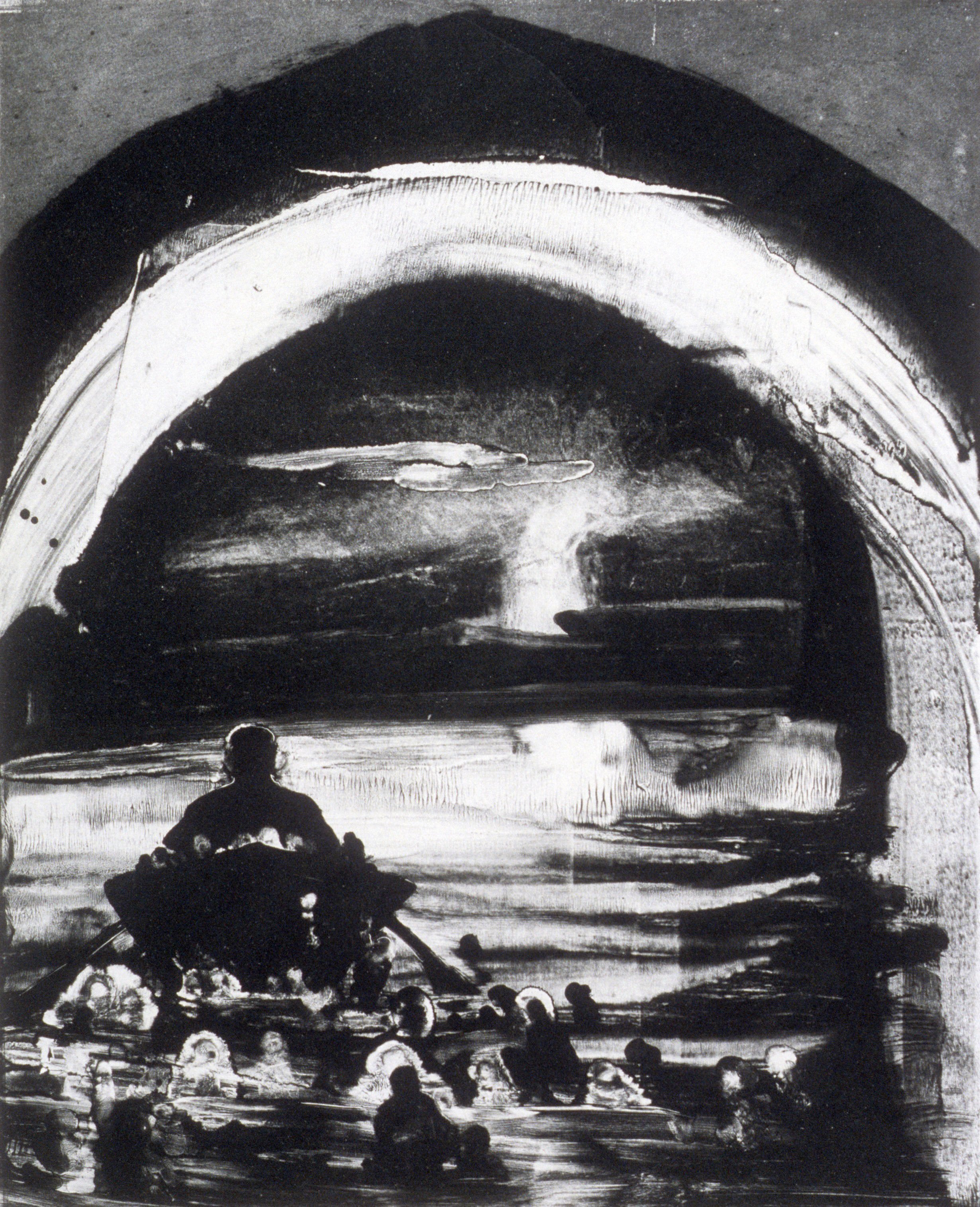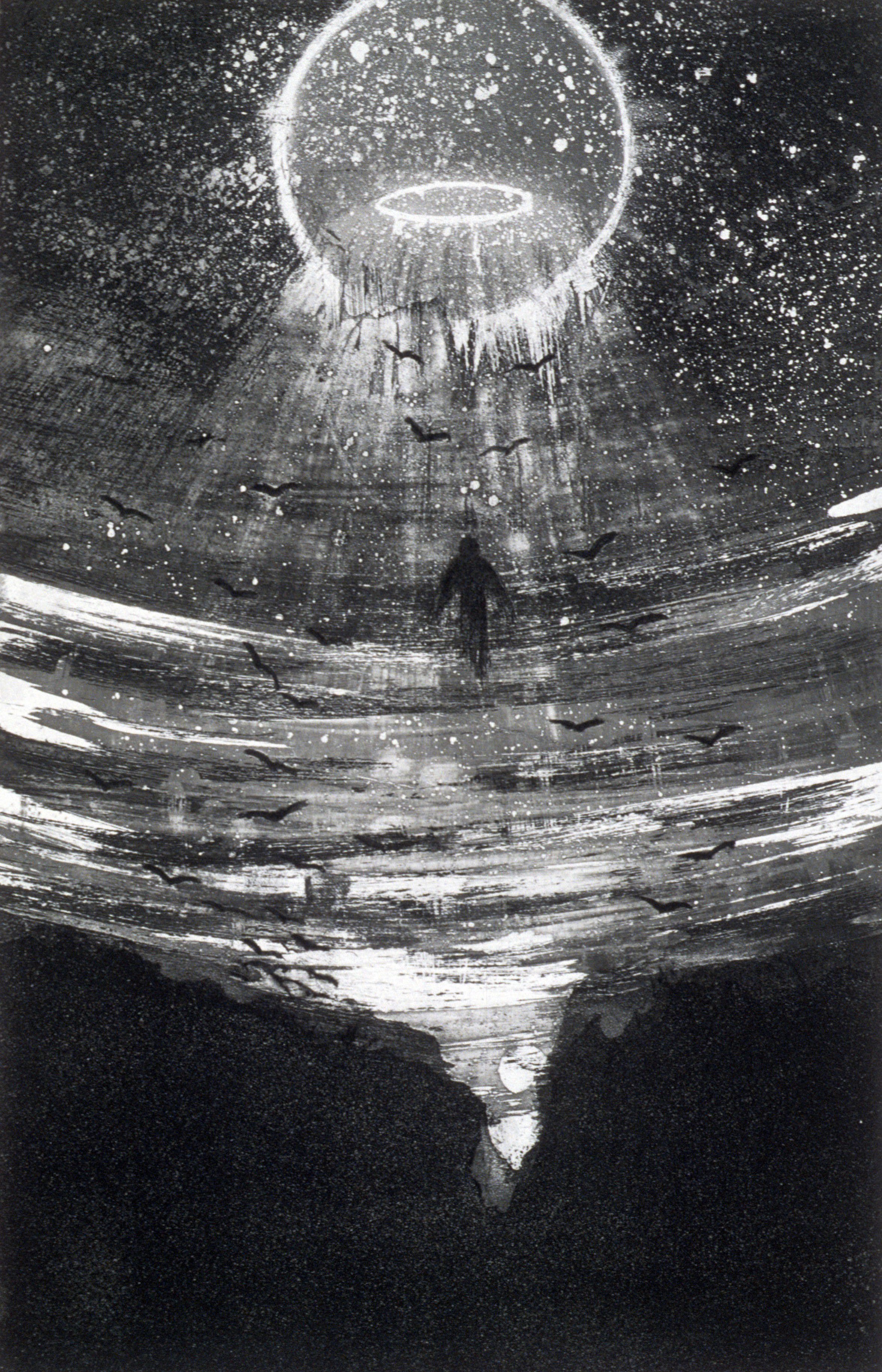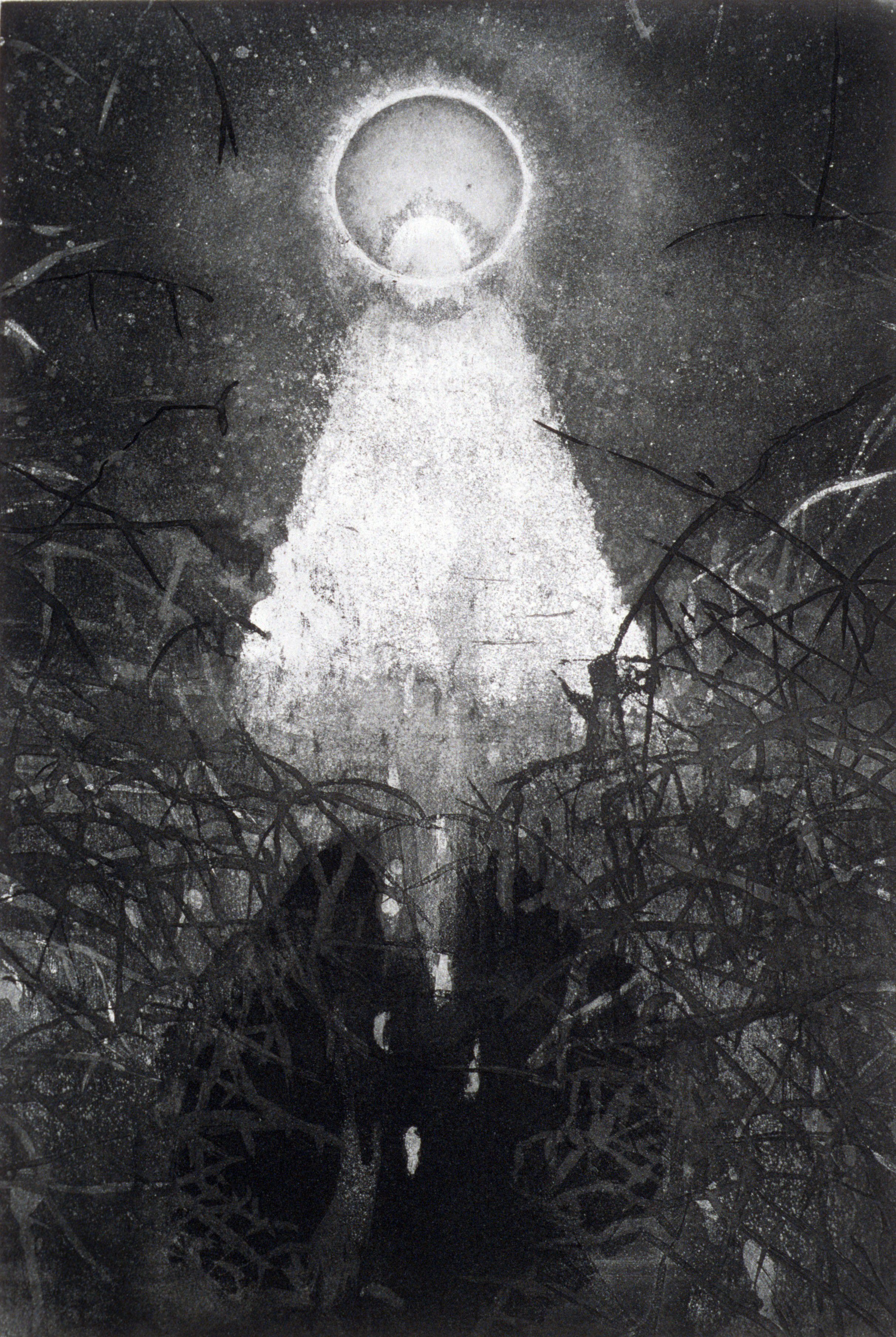The Inferno of Dante: Canto VIII: The Tower, 1997-2000
The Inferno of Dante: Canto VIII: The Tower, 1997-2000
Etching
Collection of the Springfield Art Museum, Springfield, MO
The Inferno, the first and most familiar of three sections of The Divine Comedy, was completed early in the 14th century, by the poet Dante Alighieri while in exile from his beloved city of Florence. The poem, written in the vernacular Italian rather than Latin, expands the traditional troubadour love song/poem into a journey defining the human condition. Its exploration of sin and weakness retains its universality because we still recognize all of its elements in our own time and in ourselves. The Inferno is a poem of despair, sadness and loss culminating in the hope and ultimate redemption that Dante, the pilgrim, finds in the Purgatory and Paradiso, which complete the Divine Comedy. The long history of illustrations of this poem traditionally includes the figures of Dante and Virgil on their journey. Michael Mazur has chosen to show what they saw rather than their seeing of it.
In 1993, Farrar, Straus and Giroux published to great acclaim The Inferno of Dante, translated by Robert Pinsky and illustrated with reproductions of monotypes by Michael Mazur.
Learn more about this etching here.
Purchase the book of etchings here.
About the Edition
The portfolio, printed in an edition of 50, contains 41 etchings printed on Arches Cover White with accompanying bilingual text printed on UV Ultra vellum. Each etching is signed and numbered and measures 25 1/2 x 19 1/2 inches. The housing of the prints are two red silk triptych-style portfolios made by hand at the Harcourt Bindery in Boston, MA. Each portfolio has interior flaps to fully protect the prints. The covering material is Italian-made Canapetta, an Italian backcloth that is made from a blend of cotton and linen. The exterior, archival-quality portfolio boxes are hand crafted at Portfoliobox, Inc. in Providence, RI, and are also covered with red Canapetta. Michael Mazur’s forty-one etchings for The Inferno of Dante were made by the artist from 1997-2000 and printed by the artist and Robert Townsend at R. E. Townsend Editions in Georgetown, Massachusetts.
The Italian text is excerpted from the Meridiani edition, Arnoldo Mondadori Editore, and set in Adobe Weiss Italic.
The English verse translation by Robert Pinsky is excerpted from The Inferno of Dante, copyright 1994 Farrar, Straus and Giroux, and is set in Adobe Optima.
The type was printed by David Wolfe at Wolfe Editions, Portland, Maine.
The design for the book and the portfolio is by Anne Beresford, Boston.
Bound Format
The format of the book bound in two volumes is printed in an edition of 25. It contains 41 etchings with bilingual text, all printed on Franklin White with each sheet measuring 25 x 19 inches. These elephant folios were bound by hand at the Harcourt Bindery in Boston. The binding is one-quarter black Nigerian morocco (goatskin) tanned in England by the Harmatan Leather Company; the cloth covering the boards is Italian-made Canapetta.Each exterior, archival-quality slipcase is hand crafted at Portfoliobox, Inc. Providence, RI, and is also covered with Canapetta. Each slipcase is lined with Stonehenge, a domestically manufactured acid free printmaking paper. These are signed and numbered in Roman Numerals I-XXV on the colophon page. Each bound book contains one additional loose print, signed and numbered 1-25.
Portfolio Format
The portfolio, printed in an edition of 50, contains 41 etchings printed on Arches Cover White with accompanying bilingual text printed on UV Ultra vellum. Each etching is signed and numbered and measures 25 1/2 x 19 1/2 inches.The housing of the prints are two red silk triptych-style portfolios made by hand at the Harcourt Bindery in Boston, MA. Each portfolio has interior flaps to fully protect the prints. The covering material is Italian-made Canapetta, an Italian backcloth that is made from a blend of cotton and linen. The exterior, archival-quality portfolio boxes are hand crafted at Portfoliobox, Inc. in Providence, RI, and are also covered with red Canapetta.
Reviews
I'll always be grateful for the collaboration with Michael Mazur: his great illustrations continue to guide my understanding of the Inferno. His works embody the emotional range of the poem, its intimacy and grandeur.— Robert Pinsky, poet and former United States Poet Laureate
This is one of the most graphic embodiments of tragic vision by any artist — Aristotelian "pity and terror" — a devastating visualization of Dante's words that is finally also (and must be) beyond words.— Lloyd Schwartz, Pulitzer Prize winning critic and poet
Mazur, a master of the monotype, offers a veritable visual commentary in step with Dante's voyage through hell. He continues an American tradition of doing Dante in black and white, yet at the same time revives and radicalizes an older, European motif by placing the viewer once again in the midst of the drama: you play the Poet's part while Mazur, through his experience in probing graphically the limits of human psychology and his thoughtful reading of the Commedia, capably assumes the Virgilian mantle."— Christian Dupont, a scholar in the Special Dante Collection of the Hecksher Library at Notre Dame University
Mazur, unlike many of his predecessors who have explored the infinite possibilities of Dantesque imagery, has remained true to his personal itinerary of innovation within his own artistic vision. He never opts for the obvious or the easily identifiable, but chooses instead solutions that are destined to remain in a timeless dimension.— Giorgio Marini, Curator of Graphic Arts, Museo di Castelvecchio, Verona
We have here, in communion, three masters: the Italian poet, his modern American translator, and the modern artist. Mazur has re-thought, re-felt this monumental poem in terms as majestic and memorable as Doré's.— Rosanna Warren, poet and Professor of English, Boston University



